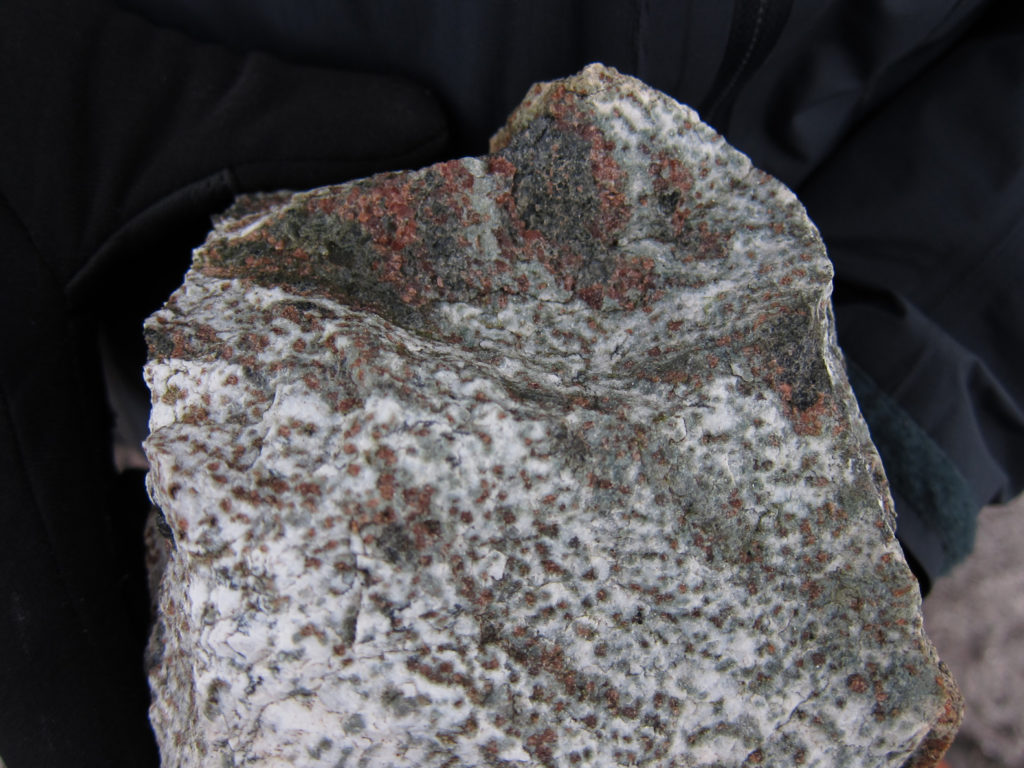Posted by: Felix Halpaap and Stéphane Rondenay
Håkon Austrheim leads the SWaMMIS field trips to the world-class outcrops of Holsnøy. Håkon is a professor at the University of Oslo, and a petrologist specializing in fluid-rock interactions and pseudotachylytes.

Geologic terranes of the Bergen area. Holsnøy is the island labelled with the number 5, and is part of the Lindås Nappe. Map from the website of Håkon Fossen; see his excellent page on the Bergen Arcs System for more information.
The outcrops on Holsnøy reveal the complexity of rock reactions in the deep continental crust. During the Caledonian Orogeny (400 to 450 million years ago), these rocks were 60 km down at the base of an ancient mountain belt, where the pressure-temperature conditions would be expected to transform granulite facies rocks into ecologites. However, the outcrops we see at the surface today contain both types of rock — white-grey granulite and dark green ecologite. Why is this? Because the process of eclogitization not only requires high pressures and temperatures, it also needs water (H2O). H2O can come from hydrous minerals in the rock or from fluids percolating through the rock. The granulite of the Holsnøy outcrops is rather dry, and thus ecologitization occurred only where it came in contact with aqueous fluids.

Pseudotachylytes (locally molten rock, quickly cooled as amorphous glass) within some outcrops on Holsnøy are evidence of earthquakes at the base of the Caledonides mountain belt, at depths far deeper than where one would normally expect earthquakes according to the brittle-ductile transition (usually around 15 km). Earthquakes deeper than 40 km depth, termed “intermediate depth earthquakes”, are observed today in active subduction zones and at the base of the Himalaya. The mechanism behind intermediate depth earthquakes remains one of the outstanding questions in seismology.
Håkon was one of the first geologists to recognize the field record of deep earthquakes, which led to a number of high-profile publications about the geology in Bergen’s backyard (see, for example, Pseudotachylytes Generated During Seismic Faulting and Eclogitization of the Deep Crust). He has also shaped current ideas that metamorphism cannot be predicted through pressure-temperature conditions alone, but that fluids are usually required to transform an otherwise metastable rock.
See field trip information here.



4 thoughts on “The geology of Holsnøy”
Comments are closed.